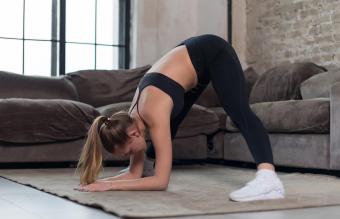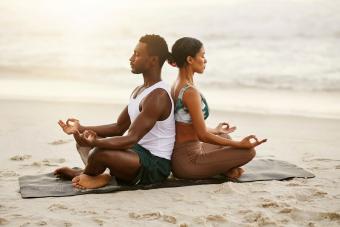
Weekend warriors, full time athletes, desk jockeys and new moms can all benefit from back stretching exercises.
Why You Need Back Stretching Exercises
Consider the structure of your spine. It is composed of an intricate and interactive network of muscles, joints, bones and ligaments. Together, these structures support your body weight, while enabling forwards, backwards and side-to-side movement. Although the spine is meant to be mobile, the muscles that support it work on a use it or lose it principle. Unfortunately, while the conveniences of modern technology may be helpful, they also cause us to be less active. We sit for hours at our computers and when we come home, we use the remote control to turn on the television and adjust the channels.
In many cases, our sitting posture leads to lower or upper back stiffness. A chair that is not ergonomically designed will cause you to compress your weight, thus adding excess pressure on the lower back. Additionally, certain seating postures can lead to muscular imbalances, which can in turn exacerbate both lower and upper back stiffness. Fortunately, this type of stiffness can be alleviated and in some cases prevented by performing back stretching exercises.
Types of Stretches for the Back
In the past, passive stretching was the only known form of lower and upper back flexibility exercise. Fortunately, due to sophisticated and extensive sports medicine research, we now know that there are many effective ways to stretch the back. These include:
- Static stretching
- Dynamic stretching
- Myofascial self release
Static Stretches for the Back
Static stretching is often referred to as passive stretching. It is the type of stretch that is most often used in yoga exercises. A static stretch is usually held for 20 to 60 seconds. The knees to chest stretch is the most common static stretch for the lower back pain.
- Lie on your back with your knees bent.
- Inhale to prepare.
- Exhale and lift one bent leg off the floor.
- Use both hands to draw the leg towards your chest.
- Hold the stretch for 20 to 60 seconds.
- Repeat on the other side.
If you work hunched over at a computer, there's a good chance that you experience upper back stiffness. Fortunately, there's a really easy way to loosen up.
- Sit upright in your office chair.
- Inhale to prepare.
- As you exhale, reach your arms towards the back of the chair, as if you were giving the chair a backwards hug. Your palms will be facing the chair.
- Hold the stretch for 20 to 60 seconds.
- Frequently repeat throughout the day.
Notice that all of these stretches have a breathing pattern. Using breathing with your stretches will help you relax, which will in turn enhance your flexibility.
Dynamic Stretches for the Back
Dynamic back stretching exercises are performed with movement. Some people call this functional flexibility, because the movements mimic the type of moves that would be used in daily life and thus makes you more functional in your every-day activities. The pelvic tilt and the cat exercise are the most common dynamic back stretches.
- Lie on your back with your feet separated at pelvic width apart.
- Inhale to prepare.
- As you exhale, draw your navel towards your spine and tilt your pelvis from the floor. You should form a hollow bowl between your pelvis and your navel.
- Keep your abdominals contracted and hold the tilt for five seconds.
- Inhale and return to the floor.
- Perform 12 repetitions.
You can use the pelvic tilt exercise to help you with the biomechanics of the cat. Always begin the cat with the tilt. Many people leave out this step.
- Kneel on all fours.
- Inhale to prepare.
- As you exhale, draw your belly button towards your spine, tilt your pelvis and round your back.
- Stay in the rounded position and hold your abdominals tight for five seconds.
- Inhale and return to starting positions.
- Perform 12 repetitions.
The stability ball provides an excellent piece of equipment for performing dynamic flexibility exercises. Simply sit on the ball, stabilize your upper body and perform hip circles in each direction.
Myofascial Self Release Stretches
Myofascial self release uses Styrofoam rollers to relieve muscle stiffness. It's a relatively new, but extremely interesting method, which combines the benefits of stretching with the benefits of massage. Foam roller flexibility exercises untie muscular knots, without adding excessive length to the muscles. As such, athletic teams often use it as a pre-game stretch. However, if you have severe back problems, check with your doctor before trying this or any other back stretch.







